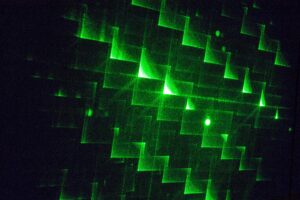They are popping up on roofs and car parks all over the world: photovoltaic panels are becoming increasingly important in the race for renewable energy. This technology, based on the conversion of solar energy – photons – into electrical energy, sees a fast development of its performance. A postdoctoral researcher at the Uni intends to further improve them with a revolutionary structure dedicated to thin-film solar cells.
These currently have a shortcoming: the electrons generated by the light are lost at the surface of the metal. While manufacturers have solved the equation for conventional solar cells by placing a perforated oxide layer between the active part of the solar cell and the metal contact, the problem remains unresolved for thin film solar cells.
A promising partnership
Taowen Wang together with the LPV team and a team from LIST has developed a structure that keeps the electrons away from the metal contact while allowing the electric current to pass through. The postdoctoral researcher recently published the results of this work as part of an FNR PRIDE project.
“This breakthrough is a real game-changer for the thin film solar cells, especially for the CIGS solar cells, as it allows to reduce the thickness of the CIGS layer without losing power conversion efficiency, thus lowering the production costs”, confirms the Uni researcher, who is continuing his work.
The newly developed structure has already been patented, and Taowen is currently concentrating his energies on finalising the results. This is likely to be the last stage before looking for an industrial partner. “It would be really interesting to be able to collaborate with a company on this technology”, confirms Taowen Wang.
The researcher is currently working on a second scientific paper dedicated to the results of his work. With a degree in materials physics, he describes himself as a research enthusiast. As for photovoltaics, “it’s a response to energy challenges that can be met with large-scale solutions”, he explains.
A publication with impact
The Laboratory for Photovoltaics was launched in 2007 at the University of Luxembourg. It brings together 14 people involved in research into this energy source and its limitations. One of its research priorities is to understand the technology. In fact, the article ‘How band tail recombination influences the open-circuit voltage of solar cells’ published in ‘Progress in Photovoltaics’ has been ranked as the 8th most cited publication in this journal between 2021 and 2024.
“Being one of the 10 most cited articles in the most reputed photovoltaics journal makes me proud and happy”, commented Prof. Susanne Siebentritt, Head of the Laboratory for Photovoltaics, who initiated this research at the Uni.
The stakes are high. According to Eurostat data, photovoltaics will be the fastest-growing sector in 2022. However, with a share of 18.2% in the EU, behind wind power (37.5%) and hydro power (29.9%) as renewable energy sources, there is a lot to gain.
Discover more
Read also
-

-

Light without borders for the Institut de Photonique
ResearchPhysics & Materials ScienceLearn more -

